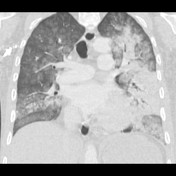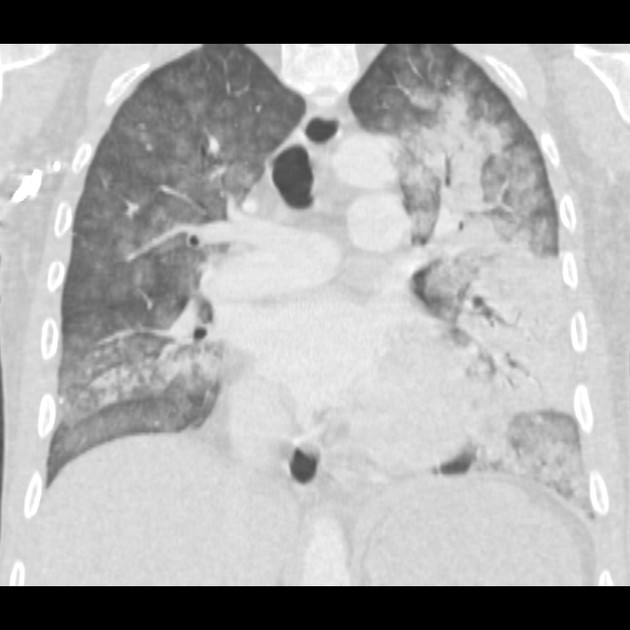Presentation
Renal impairment on anticoagulant therapy. Recent onset dyspnea and hemoptysis.
Patient Data





Diffuse bilateral ground-glass alveolar opacity casting the pulmonary lobules together with confluent areas of consolidation. No interlobular septal thickening is seen.
Prosthetic aortic valve.
Case Discussion
Diffuse bilateral ground-glass alveolar opacity advancing to confluent areas of consolidation. The pattern of opacification and the fact that the patient is on anticoagulant therapy is highly suggestive of diffuse alveolar hemorrhage (DAH). The condition is likely in the acute phase as no interlobular septal thickening is present, which is usually depicted in the subacute phase giving the "crazy paving" appearance.
The clinical context of renal disease with DAH can is a trigger to rule out possible associated conditions such as Goodpasture Syndrome (Anti-GBM disease) and Anti-neutrophil cytoplasmic antibody (ANCA) associated vasculitis. However, for this patient he has a long standing history of renal impairment and no relevant laboratory findings.




 Unable to process the form. Check for errors and try again.
Unable to process the form. Check for errors and try again.